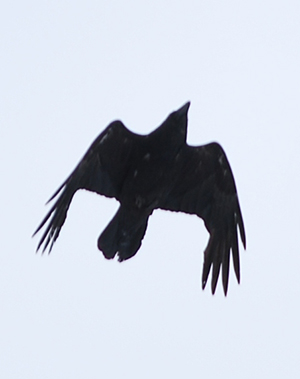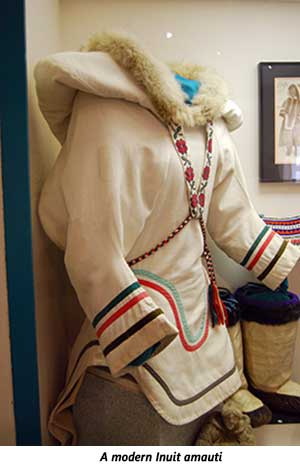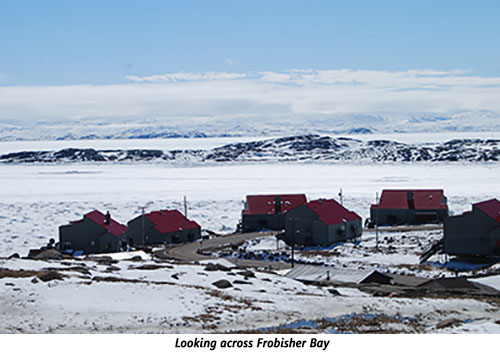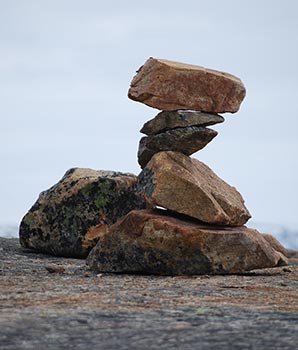 The darkness of December weighs heavily on me, like a smothering blanket. These last few weeks before the winter solstice seem especially gloomy, each day shorter than the last. I pray for snow to brighten the landscape. My only comfort is that I don’t live in Iqaluit, the capital of Nunavut, where the sun is currently rising around 9 am, and setting before 2 pm.
The darkness of December weighs heavily on me, like a smothering blanket. These last few weeks before the winter solstice seem especially gloomy, each day shorter than the last. I pray for snow to brighten the landscape. My only comfort is that I don’t live in Iqaluit, the capital of Nunavut, where the sun is currently rising around 9 am, and setting before 2 pm.
But when I visited Iqaluit with my husband in early June, the sun situation was the opposite. The sun rose at 2:30 in the morning and set at 10:30 at night. With the sun lingering just beyond the horizon, the night sky was bathed in soft light and never darkened. The days seemed endless. The constant light was made more intense by the snow still on the ground. It was a bit surreal to look across still-frozen Frobisher Bay to the snow-covered mountains marching off into the white distance.
We flew up from Ottawa, where there was a sweltering heat-wave of 30°C. In Iqaluit, it was a refreshing +3°C. The weather was what we expected, as was the landscape of rock and snow and treeless tundra. However, despite investigating our destination thoroughly before we arrived, the experience of Iqaluit still had a few surprises for us.
The perfect sense of Inuit fashion
Almost half the population of Iqaluit is Inuit. Most signs are bi-lingual: Inuktitut and English. It wasn’t really a surprise to see a young woman in the sprawling Northmart store, which carries everything from lettuce to ATVs, carrying her baby snuggly tucked into the back of her amauti. The surprise is that this functional garment never caught on anywhere else. The amauti is a traditional woman’s coat with a voluminous hood. Between the hood and the woman’s back is a pouch for her child. The child rides along in warmth and comfort, and the mother’s hands are free. Originally made from sealskin, the modern version is colourful cotton with exquisite embroidery. If I could go back in time 25 years, I would buy an amauti instead of a stroller–it just makes so much sense.
Ravenspeak
Walking in and around Iqaluit, we were often within sight or sound of glossy black ravens. They would swoop elegantly overhead, only given away by the rustling of their feathers. Listening to their intelligent-sounding chatter, we detected an amazing range of vocalizations in their croaks, rattles, and cries. Although we could not understand their language, they seemed friendly, companionable, and wise.
At perpetual rest on the beach
There is one beach in Iqaluit, and it enjoys extensive views down Frobisher Bay. It is eerily quiet and crowded with painted wooden crosses, rock borders, and tributes of plastic flowers. This overflowing cemetery has long been at capacity, with new graves being dug outside the gates. A cemetery on the beach? We couldn’t think of a better use this close to the Arctic Circle. In a city built on rock, it makes perfect sense. The city hopes to open a new cemetery soon, at another beach just outside of town.
No Passport Required
In a place so otherworldly, we had to keep reminding ourselves that we were still in Canada. After a flight that took us three hours north from our home in Ontario, we hadn’t even left our time zone. We used the same money, phoned long-distance using our Canada-wide plan, and plugged our laptop directly into the wall socket. And every time we did so, we marvelled, “oh, yeah, we’re still in Canada!”



Barbara Lehtiniemi is a writer, photographer, and AU student. She lives on a windswept rural road in Eastern Ontario.


